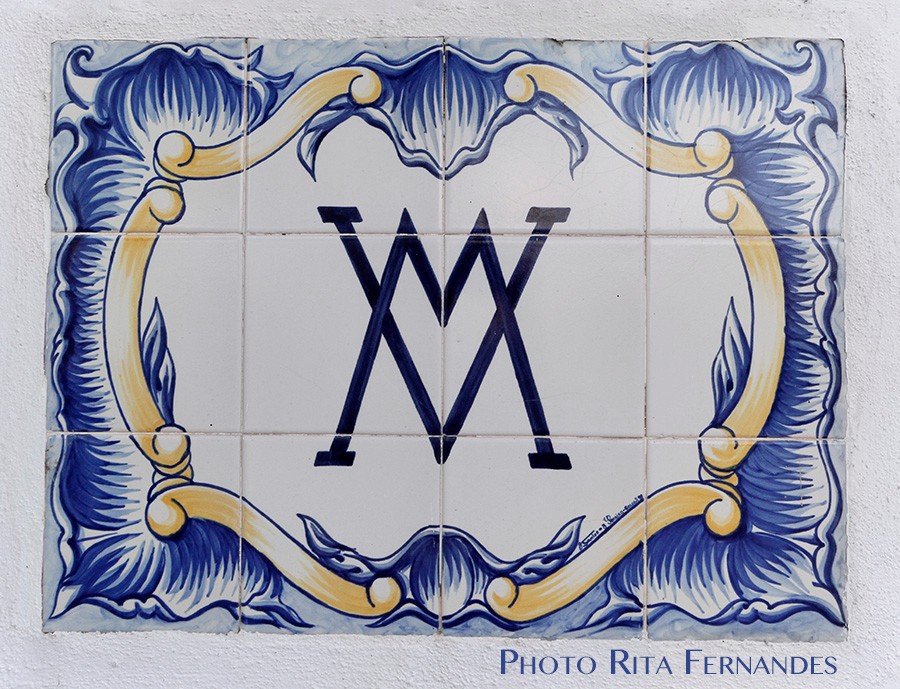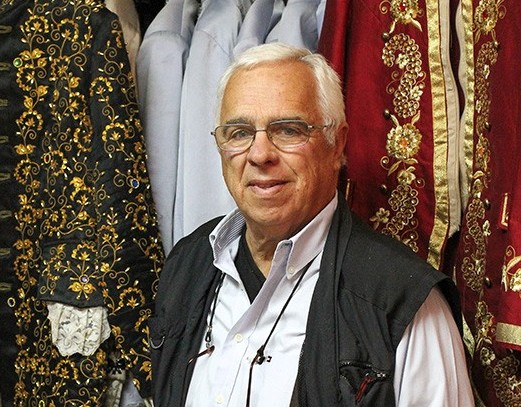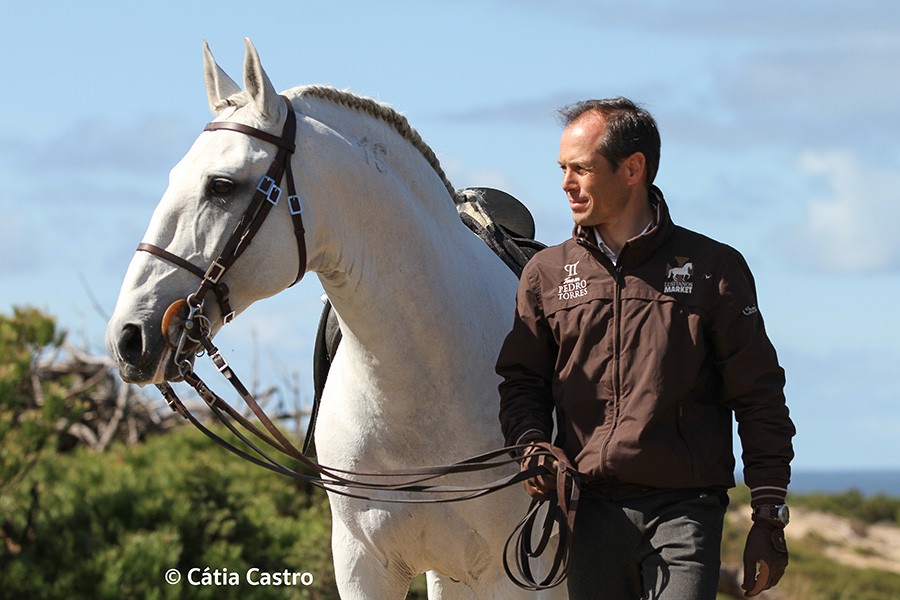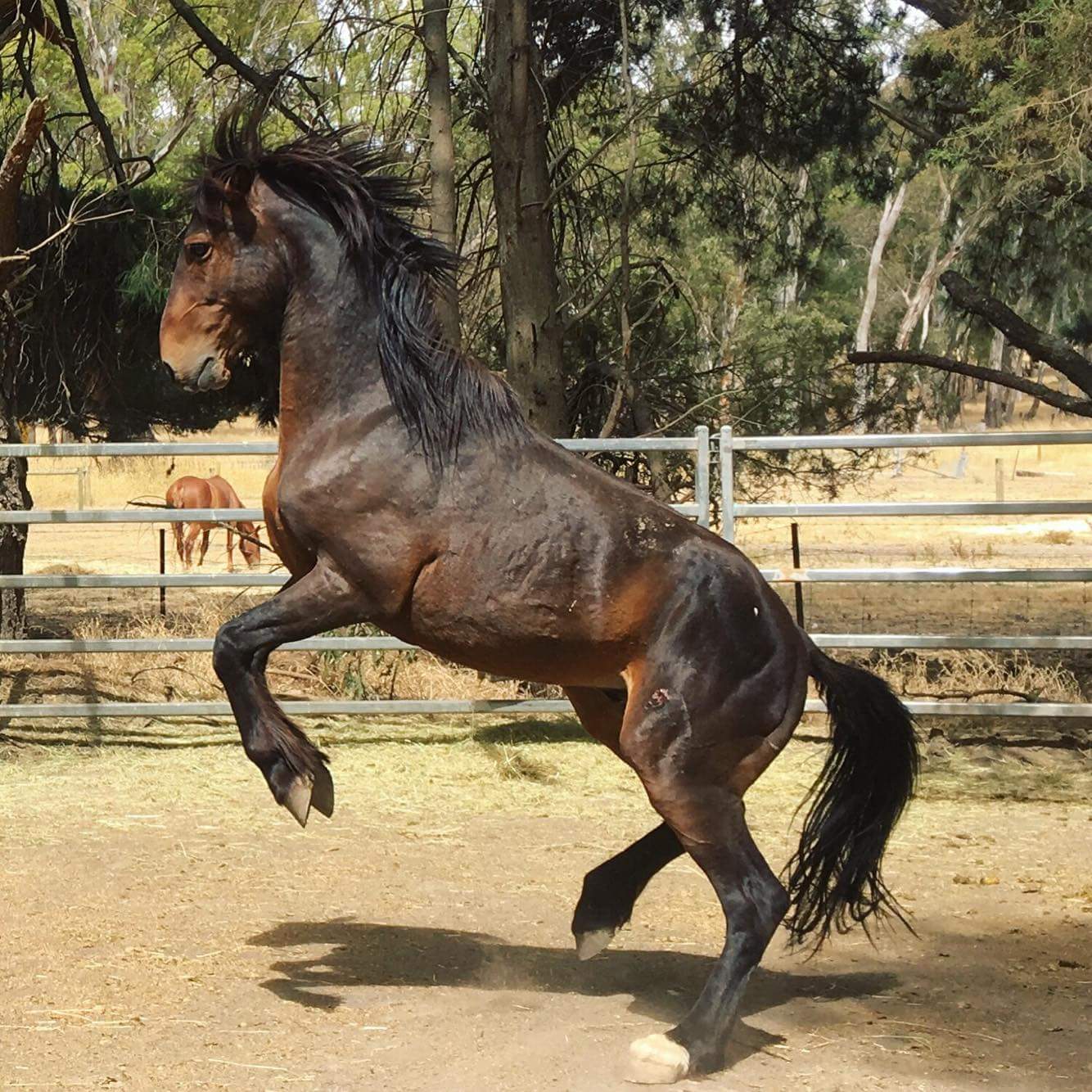
MANUEL VEIGA STUD
MANUEL VEIGA STUD
Breeding TIMELESS Lusitanos
TEXT: FILIPA JÁCOME & RITA FERNANDES PHOTOS: KATYA DRUZ & RITA FERNANDES
Brought to you in partnership with Lusitano World
 As we navigate the sinewy roads from Golegã, the Portuguese capital of the horse, to Azinhaga, the rural landscape screams Ribatejo, with its endless fertile fields that have been one of the richest agricultural regions since the XVIII. At the entrance of the small village, an impressive centenary palace commands your attention with its huge green gate standing open, as if inviting visitors inside. On each column, stands two sets of tiles: to the right, the name of the estate “Quinta da Broa”; to the left, the emblematic Veiga brand. We have arrived at the birthplace of the Veiga horses, one of the four main lineages of the Lusitano breed.
As we navigate the sinewy roads from Golegã, the Portuguese capital of the horse, to Azinhaga, the rural landscape screams Ribatejo, with its endless fertile fields that have been one of the richest agricultural regions since the XVIII. At the entrance of the small village, an impressive centenary palace commands your attention with its huge green gate standing open, as if inviting visitors inside. On each column, stands two sets of tiles: to the right, the name of the estate “Quinta da Broa”; to the left, the emblematic Veiga brand. We have arrived at the birthplace of the Veiga horses, one of the four main lineages of the Lusitano breed.

Looking up at the magnificent arch that tops the gate, the initials of Rafael José da Cunha, founder of the farm in 1817, can be seen in the intricate metal work. He initiated the breeding at Quinta da Broa, always seeking to improve the qualities of the horses. These early generations of horses were used for everyday tasks, but the emphasis was on improving the quality for bullfighting. In the primordial bloodlines of these “peninsular” horses are stallions from the Alter line, a gift from the Portuguese king of the time, D. Fernando II and his son. D. Pedro V. Curiously, the famous MV brand of today – the same that greets you at the front gate of the manor – was not the original one. As the line of succession changed the head of the farm, so did the brand. The MV brand known to all only came into use when Eng.º Manuel Tavares Veiga inherited the estate in the late 19th century. He marked a new era for the horses of Quinta da Broa, using zootechnical principles and applying the rules of consanguinity to create homogeneity and fixate the characteristics of the ancient Iberian warhorses – the gineta horses, gifted with grand elasticity, fine perception and exceptional capacity of interpretation of the rider’s will.
Eager to meet these great horses in person, we pass the front gate and into the courtyard. The beauty of the buildings and gardens envelop you immediately in their charisma; the property itself is truly something out of a history book. As your eyes follow the clean architectural lines of the main house’s façade, you catch a glimpse of a lovely horse framed by a stone arch. Beckoned by the sound of hooves landing on the limestone pavement, and as you come closer, and the white silhouette slowly becomes a powerful grey mare improvising a perfect jambette while basking in the sun. Against the blue and white tiles you can discern the typical convex head, the arched neck harmoniously connected to the withers and the nicely sloped shoulders. The back is short, proceeded by a strong kidney and the group, so full of angles, suggests an incredible capacity for collection.
On our side of the arch rises the most modest building in the estate, which, for horse lovers, hides the farm’s truest riches: the horses. Inside, beautiful columns of dark metal hold the wooden ceiling and set the limits to the stalls that line each side of the room, each occupied by an impeccably groomed stallion. It is not hard to imagine that in these same stables lived the great stallions Lidador, Agareno, Berber, and Sultão, so important to the Veiga horses’ current characteristics. Over the years, many others excelled and became genetic landmarks for the Lusitano breed: Quê-Bá, Bailador, Lidador II, Universo, Nilo, Zimbro II, Dardo II and Danubio, all of them achieved great results in competitions of the breed. In classical riding, the outstanding Zurito was immortalized by Mestre Nuno Oliveira. In Spain, Opus 72, ridden by the famous bullfighter Alvaro Domecq, was considered one of the best bullfighting horses of all times. And even in jumping there was Novilheiro, which started his career in bullfighting and later became an international show jumper under the saddle of the English Olympic rider John Wittacker.

In the fields of many modern stud farms across Portugal graze the innumerable progeny of these great stallions. The consanguinity achieved by Manuel Tavares Veiga and improved by the current manager of Quinta da Broa, Manuel de Castro Tavares Veiga, is what gives the Veiga horses a great capacity to pass on their characteristics to their progeny and the reason so many use Veiga horses to improve the gene pool of their stud. The success of the breeding program becomes clear when we visit the mares and the young two and three-year-olds. As we watch galloping on their pasture, we can’t help but try to guess which will be the next champion, or perhaps the founding stallion of a new stud farm.
This is where the work of Manuel Borba Veiga begins. With the unconditional support of his father, he became responsible for riding and testing the Veiga horses and mares. With the support of a highly dedicated team, he has achieved great results in modern dressage national and internationally, once again proving the quality and versatility of the timeless Veiga horses. It was within this context that we’ve talked with Manuel about his daily routine, his horses, and goals for is international dressage rider career.
BH: Tell us about the Veiga Team – who are the names and faces behind the brand?
MV: I am very lucky to work with my family, and together we are the core team in Quinta da Broa. The pillar of the organization is my father, Manuel Veiga – who is responsible for the breeding program and coordinates all at the stud. I used to do a bit of everything around the farm, but now I am currently the person responsible for the training of our horses. My brother Carlos helps with the foals from weaning, at 7-8 months old until they turn three. We have two people to help with the stabled horses and another rider who helps us starting the three-year-olds and test the mares. Normally I start working with young horses when they turn four-years-old. With the competitions program running – both national and internationally – my brother is a big help as he takes care of all the horses while I am out.
BH: You have turned the “face of the stud farm” every time we associate it with dressage. How is your daily routine at Quinta da Broa?
MV: In the beginning, I did a bit of everything around the farm, but nowadays our team grew, and I am devoted to training the horses. I usually begin around 9 am, starting with the most complex horses. Currently, I have in my care around ten horses – six from our stud and five that belong to clients – although there were times when I had up to 14 horses to ride.
We are lucky to have great infrastructures that assist us to do our daily routine more effective. Our indoor arena was a huge improvement, offering the possibility to ride anytime regardless the weather conditions. However, I really enjoy working the horses in our outside arena too – it overlooks the fields where we keep the three-year-olds, so it’s not only a great view, but it also helps with getting the horses used to working with others in sight. I also take the horses out for a ride in the field quite often – about once a week – to break the routine and relax them. Usually, my day is done around 6:30 pm. I love what I do, but one my favorite aspects of working at Quinta da Broa is that I get to stay and work close to my family.
BH: Many of the horses you trained reached Grand-Prix Level. What are the main training methodologies you use?
MV: Every horse is different. This is a fundamental notion of training horses – some have a greater ability for certain exercises than others, so we need to be able to understand them, their talents and difficulties. Veiga horses are generally attentive and willing, and my goal is to reach the same standard, and that is to achieve a certain degree of homogeneity in their response to the rider’s aids and so that they can also be ridden successfully by any rider.
Normally I plan the lessons a certain way – I always idealise a beautiful lesson, with incredible moments. Riding also comes from the heart. There is technique but also a lot of feeling and spontaneity involved. My way of riding relies a lot on feeling the horse and on striving to do more and better. Nowadays, knowledge of how to ride is more available – people who want to be riders can easily learn the “how’s” and “why’s”: technique can now be considered a commodity. The difference is in understanding and feeling the horse – just bending a few extra millimeters can be enough to make a difference. Riding is not only technique, but it also involves some art, full of inexplicable things. And the horses we breed fit into this idea: sometimes we need to put a little magic, art, and sensitivity so that the act of riding assumes a special color.
BH: How have you developed your training technique and who do you train with?
MV: My family has always been connected to the Lusitano horse and bullfighting. So when I was a child, I wanted to be a bullfighter. My father, who has played a huge role in my development and career, helped me to open my horizons to other possibilities. When I became a professional, rider seven years ago, I was lucky to be able to train with several riders of international level.
From the beginning, I sought to learn from great Portuguese professionals like Miguel Ralão, Daniel Pinto, Francisco Candela de Abreu and Paulo Caetano. It is really important to listen and to learn from different people. I was also fortunate to train and learn with big names in international dressage such as Mariette Withages, Kyra Kyrklund and, more recently, Jen Bemelmans who trained for a long time with the Spanish dressage team and currently trains the French Team and also Gonçalo Carvalho with Batuta. These teachings are fundamental. A good rider must be able to interpret and apply them to their daily training.
BH: What do you consider the most emblematic moment of your young career and why?
MV: I must confess I’m not a great fan of football. I do follow the Portuguese National Football Team, but I had never been to a football stadium. Yet, that which is maybe the most symbolic moment of my career happened the first time I set foot in a football stadium, at the World Equestrian Games in Normandy in 2014. I was 27 years old then, and when I entered the dressage arena with Ben-Hur, I must confess that I felt the weight of the crowd and, at the same time, exultation for that gratifying moment in my career.
BH: How do you select your horses with a talent for dressage? What are the morphological and psychological characteristics that you look for?
MV: We’ve been very conscious of ensuring an evolution in the Veiga horse. We look for horses with good morphological traits, according to the breed’s standards and with quality of gaits to compete. We managed not to lose their sensibility, which must be there but cannot be excessive: horses need to use their energy to help the rider and must have a great temperament.
The process of selection is run by my father, who has a special talent to foresee a horses potential. He names the foals at weaning, and even at that young age he can already tell which horses have the greatest potential. When he senses that a certain foal will become a great horse, he gives them names of important horses in the history of our stud farm, and many of those foals really become formidable. He can tell if it is going to be a horse to use as a breeding stallion, a horse for bullfighting or dressage, and many times, he gets it right. For instance, with Ben-Hur, he always knew he would be a great horse. Altivo, he said he would be for competing in dressage, and he was the best horse I ever rode. Embaixador is a good example too, I have been training him since he was three years old, and sometimes I questioned if he could miss this or that characteristic. He is turning six, and I recognize he is becoming formidable just like my father anticipated. He will be presented at the stallions in the upcoming Golegã Fair. 
BH: If you had to name a horse in your team, which would be “the one”?
MV: The most special horse in my career is Ben-Hur. It’s a horse that the moment you sit on the saddle, wherever you take him, he is willing to work. As his name suggests, he is a warrior and once again, my father guessed right. He gives his all, and when you almost think he hasn’t more to give, he finds something more. We are really alike in this sense.
However, if you ask me what is the horse of my life, then I would name Altivo, for sure. It will be hard to find another one like him. Unfortunately, he had an injury. I’m left to wonder when will I experience the bond again with another horse like I had with him. It was truly special. This magic between horse and rider – this empathy – is something essential, very important and very special. The fact that I get to follow the progress of my horses since they are young foals also helps to develop that connection. We know each other. For example, when I started to ride Almansor, the horse evolved rather quickly because we trusted each other. Empathy and trust are keywords to success.
BH: And thinking about the future, is there any young horse that is showing great potential?
MV: I have several new hopes for the future. Embaixador will be at St. George level next year. I also have Bailarina – the grey mare that you saw when you arrived. She has an interesting story. I started riding her later than usual. She reminds us a lot – in terms of mechanics and morphology – of a mare that belonged to Mr. João Núncio, a great figure of the bullfighting panorama in Portugal that used to ride 50 years ago. She is a living example of the characteristics that we can maintain through generations in our horses – the morphological quality of our horses endures. She is an incredible mare, and her greatest talents are piaffe and passage. Bailarina is a performer, with different qualities than my other horses and with her, I hope to reach Grand Prix level. In the younger generations, I am also looking forward to observe the evolution of Irritada, a full sister of Altivo.
BH: What are your goals and expectations for your future in competition?
MV: I really want to go as far as possible and to take the name of the stud farm as high as possible. To qualify for the Olympics is the dream of any rider and although it is very difficult, I keep it as an ideal objective and work hard to improve my riding every day. If this happened with a horse of our brand, that would be a dream come true.
BH: You are already an example for Portuguese Riders. Do you have any words for the young riders who share your dream?
MV: I would remind all riders that we cannot expect to ride a “Totillas” or a “Vallegro” every day. We can’t simply wait for a horse like that to drive our career forward. We need to believe in the horses that we are working with as if they were the best in the world and believe in ourselves. If we do, we will go far. We shouldn’t waste time focusing on what might be wrong with them, but rather focus on what they can give us and how we can help them improve. To overcome those obstacles helps us to evolve. When I ride, I always do it with joy and hope. I don’t let the problems hold me back; I strive to find the solutions and believe, hope and fight to do every day better and better.
Enjoyed this interview?
Why not subscribe and get the beautifully printed coffee table magazine delivered to your door? Posts world wide.
To subscribe click here






